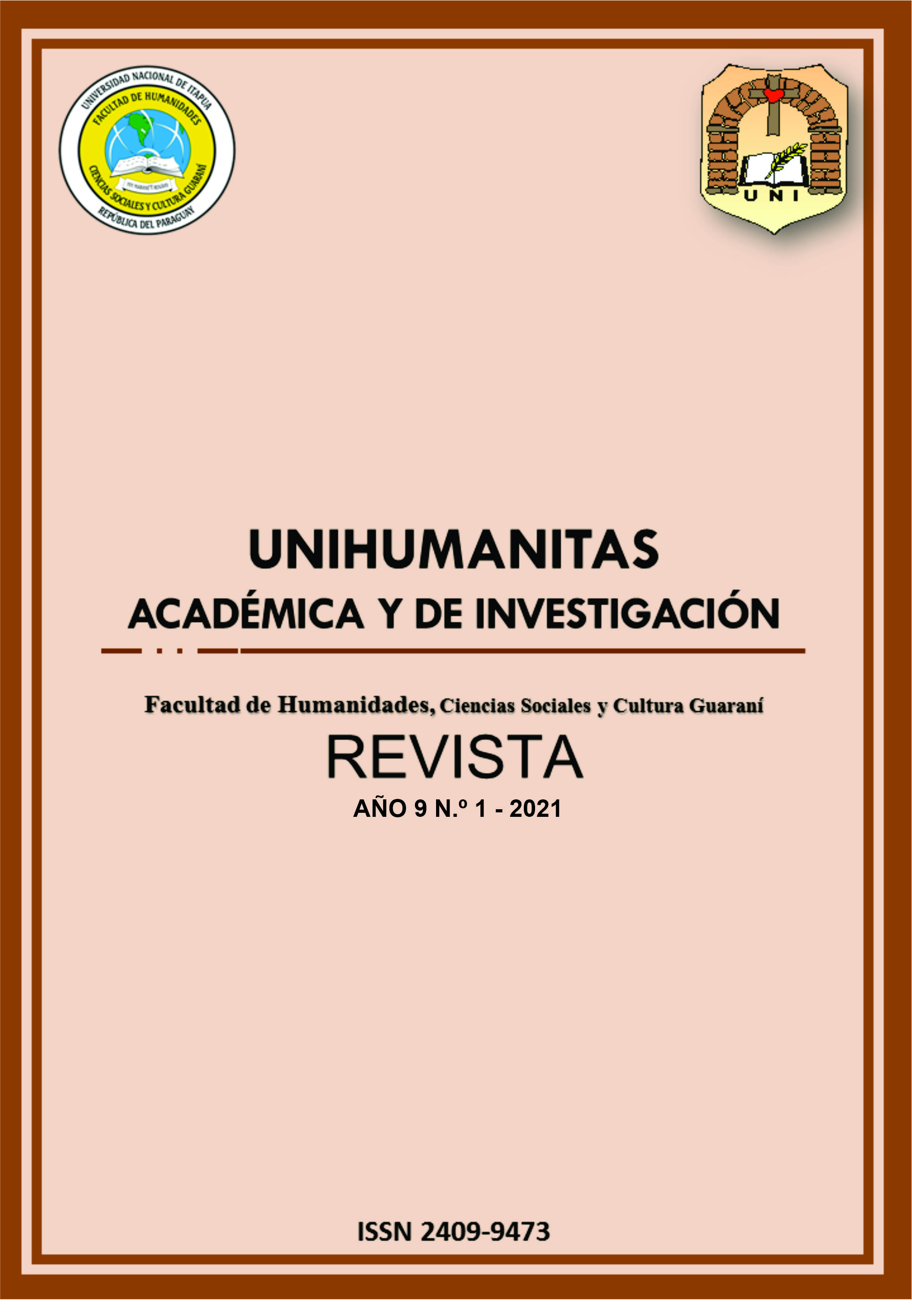Prevalence of risk for internet addictive behavior in students, year 2020
Main Article Content
Abstract
The purpose of the research was to determine the prevalence of risk of internet addictive behavior in students of a public school in the district of San Pedro del Paraná. It is a non-experimental descriptive research, with a qualitative approach, using a quantitative instrument. The non-probabilistic sample consisted of 44 middle school students of both sexes. For data collection, Kimberly Young's Internet Addiction Test (IAT) was administered. The research showed that 69.5% of the students reported a controlled use of virtual resources; on the other hand, 34.9% of the students reported an uncontrolled use of resources and that they are in the risk zone for presenting a worrying number of characteristics related to the uncontrolled use of the Internet that can lead to addiction.
Article Details

This work is licensed under a Creative Commons Attribution 4.0 International License.
References
Echeburúa, E., & Requesens, A. (2012). Adicción a las redes sociales y nuevas tecnologías en niños y adolescentes. Madrid: Pirámide.
Jiménez, A. L., & Pantoja, V. (2007). Autoestima y relaciones interpersonales en sujetos adictos a Internet. Segunda época, 26, 78–89.
Pedrero-Pérez, E. J., Ruiz-Sánchez de León, J. M., Rojo-Mota, G., Llanero-Luque, M., Pedrero-Aguilar, J., Morales-Alonso, S., & Puerta-García, C. (2018). Tecnologías de la información y la comunicación (TIC): Uso problemático de Internet, videojuegos, teléfonos móviles, mensajería instantánea y redes sociales mediante el MULTICAGE-TIC. Adicciones, 30(1), 19–32.
Enzo, C., & María, C. V. (2018). Tecno adictos: Los peligros de la vida online (1ª ed.). Argentina: Argentina.
Matalinares, M., Raymundo, O., & Baca, D. (2014). Propiedades psicométricas del test de adicción al internet (TAI). Revista peruana de psicología y trabajo social, 3(2), 45–66.
Cía, A. H. (2013). Las adicciones no relacionadas a sustancias (DSM-5, APA, 2013): Un primer paso hacia la inclusión de las adicciones conductuales en las clasificaciones categoriales vigentes. Revista de Neuro-Psiquiatría, 76(4), 210–217.

